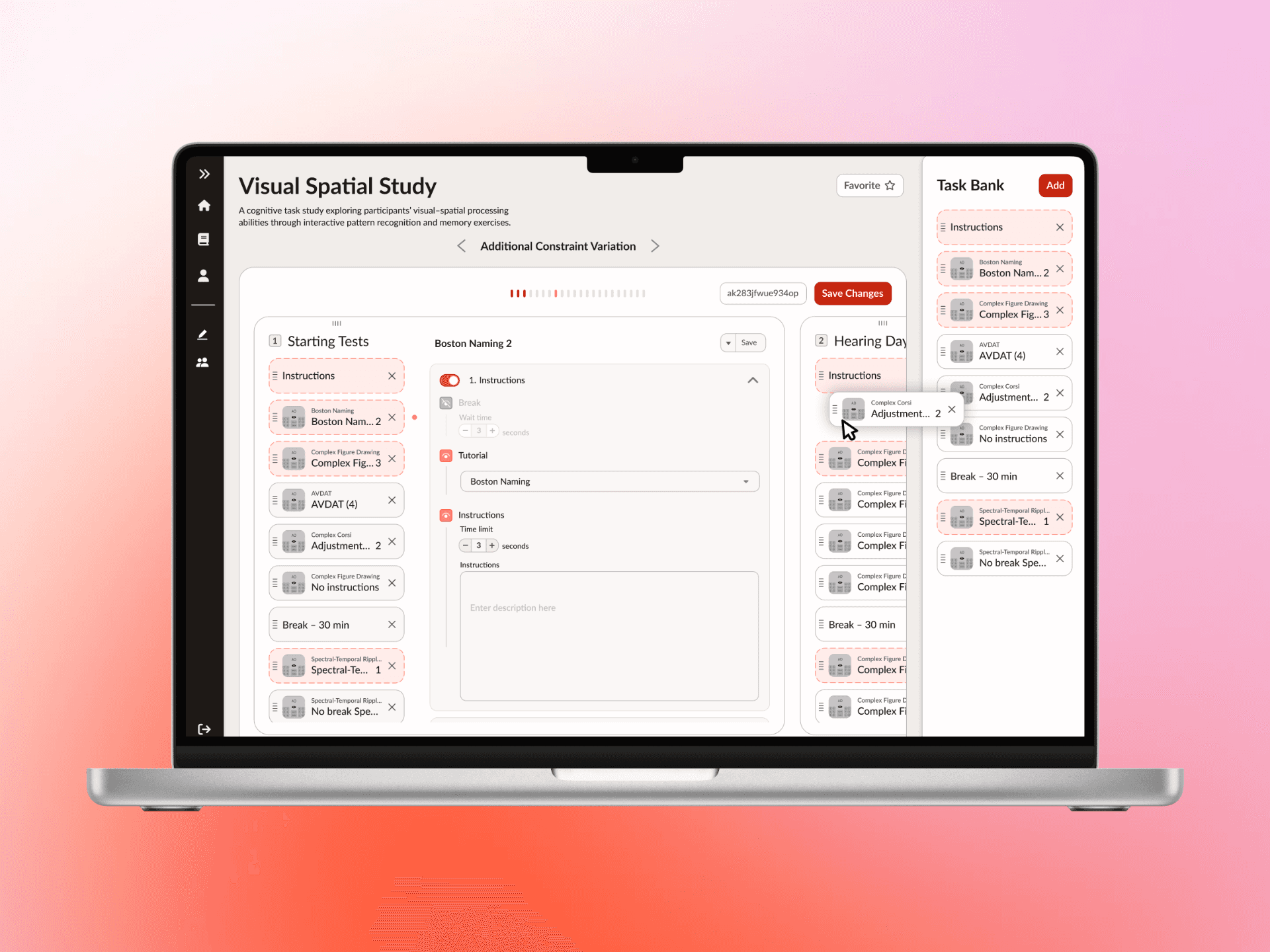#client_project
#agile_ux
Enabling cognitive researchers to build studies intuitively
my role
UX Designer
the Team
1 project lead, 1 tech lead, 4 developers, 2 designers
our client
Brain Game Center, Northeastern University
background
The Brain Game Center for Mental Fitness and Well-Being (BGC) researches and develops evidence-based brain training games that enhance cognitive functions like memory and learning. As part of Sandbox, my university’s student-led software consultancy, our team partnered with BGC to design a better way for researchers to build and manage their studies.
the process
step 1
understanding the existing system
The BGC staff had been using two separate, internal tools — one for assembling studies and another for configuring tasks.
To gain a clear picture of how studies were currently built, our team started by using the client’s tools ourselves. We worked together to map out the existing user flows and back-end data structures across both platforms, meeting regularly with the client team for clarification on certain terminology and structures.

Whiteboard with diagram of study structure

User flow - Client Tool 1: online study builder portal

User flow - Client Tool 2: Unity app for customising and running games/tasks
By the end of this step, we had discovered two key issues:
The tools were overwrought with technical jargon and redundant steps
The user flow was extremely rigid and linear, which did not reflect the natural study-building process
the problem
The existing system was overly technical and rigid—making study creation cumbersome, unintuitive, and inaccessible to most users.
step 2
simplifying the information hierarchy
The current interfaces exposed too much internal logic to end users, overcomplicating the current workflow and creating unnecessary confusion. As a team, we created a new, simplified hierarchy that made sense from the user’s perspective while preserving the necessary back-end structure for integration.

Diagram of information hierarchy simplification, showing the change from internal logic to user logic
Key changes
step 3
Redesigning the main workflow and interface
The existing flow was rigid and linear—they had to add all elements at the start and could only edit one session, variant, or task at a time. We reimagined the workflow as a visual, modular system that mirrors how researchers naturally design studies. Through rapid prototyping sessions, we converged on a drag-and-drop interface that allows users to create, organise, and manage studies within a single, cohesive platform.
Use the slider to switch between low-fidelity and high-fidelity wireframes.
Key features
modular interface
A visual, drag-and-drop layout allows users to easily assemble and adjust studies in a logical, intuitive way that mirrors their natural workflow.
step 4
creating an admin portal
We interviewed the client to clarify the desired functionality for an internal admin portal that would support role and access management while streamlining task maintenance.
Based on these discussions, we defined two core areas of control:
1
task management
2
user management
Admin users/roles dashboard
Admin task upload screen
Admin editing task template
results
The redesigned platform unified previously separate tools into a single, cohesive web application, supporting both researcher and admin workflows. The sitemap below shows how the two experiences are now clearly separated yet seamlessly connected.
Full product sitemap
Key outcomes
By unifying functionality, improving flexibility, and clearly defining user roles, the redesign made study creation more intuitive, efficient, and scalable, helping the Brain Game Center achieve its goal of broader collaboration and adoption.
This project remains in active development at Sandbox Northeastern, with my design foundations guiding ongoing iterations by future teams. As a result, the final product is not yet publicly available.




